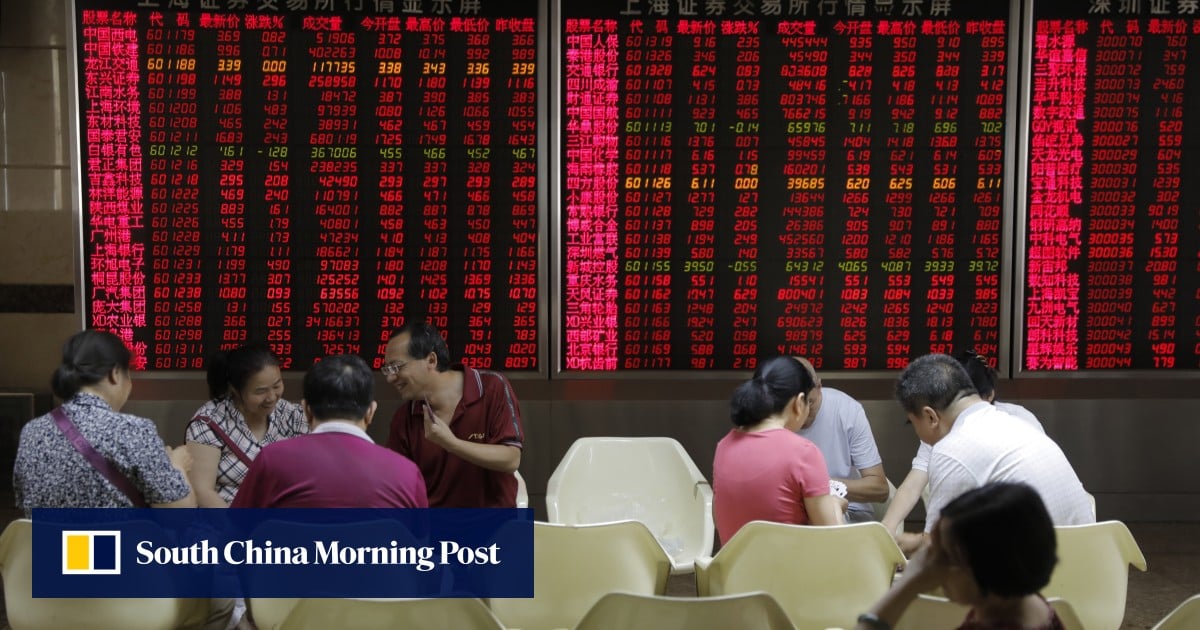China's Shift To Middle Eastern LPG: Replacing US Imports Amid Tariffs

Table of Contents
The Impact of US Tariffs on China's LPG Imports
The US-China trade war significantly impacted China's LPG import landscape. The imposition of tariffs on US LPG imports increased import costs substantially, making American LPG less competitive in the Chinese market. This had several consequences:
- Increased LPG Prices: Tariffs directly translated to higher prices for Chinese consumers and industries reliant on LPG, from petrochemical production to residential heating. The increased cost of this essential commodity affected various sectors of the Chinese economy.
- Reduced US LPG Imports: Chinese companies, facing higher prices, sought alternative, more cost-effective suppliers. This led to a sharp decline in the volume of LPG imported from the US.
- Retaliatory Measures: While not directly targeting LPG, China implemented its own retaliatory tariffs on various US goods, escalating the trade conflict and further exacerbating the situation for US LPG exporters. This created a climate of uncertainty and hampered trade relations.
- Shifting Market Dynamics: The tariffs fundamentally altered the dynamics of the Chinese LPG market, creating opportunities for other suppliers to fill the void left by the reduced US imports.
The Rise of Middle Eastern LPG as a Key Supplier
The Middle East emerged as a major beneficiary of China's shift away from US LPG. Countries like Saudi Arabia, Qatar, and the UAE, with significant LPG export capacities, quickly filled the gap. Several factors contributed to their increased competitiveness:
- Lower Prices: Middle Eastern LPG producers offered more competitive prices compared to US suppliers burdened by tariffs, making them an attractive alternative for Chinese importers.
- Increased Production Capacity: The Middle East boasts substantial LPG production capacity, ensuring a reliable and ample supply to meet China's growing demand.
- Improved Infrastructure: Investments in shipping routes and pipeline infrastructure facilitated the smooth flow of LPG from the Middle East to China, strengthening supply chains. This included improvements to both maritime transport and potentially regional pipeline projects.
- Long-Term Contracts: The shift has also seen the development of long-term contracts and strategic partnerships between Chinese importers and Middle Eastern producers, ensuring stable and predictable supplies. This signifies a more robust and less volatile supply chain for China.
Geopolitical Implications of China's LPG Shift
China's strategic shift to Middle Eastern LPG has significant geopolitical ramifications:
- US-China Relations: The shift further strained already tense US-China relations, highlighting the impact of trade disputes on global energy markets and underscoring the complexities of decoupling between the two economic giants.
- Diversification of Energy Sources: This move exemplifies China's broader strategy to diversify its energy sources and reduce dependence on any single supplier, thereby enhancing its energy security. This is a crucial aspect of China's national energy policy.
- Regional Power Dynamics: The increased reliance on Middle Eastern LPG strengthens the region's geopolitical position, altering the balance of power in the Middle East and Asia. This has implications for regional alliances and diplomatic relationships.
- Global LPG Market Impact: The change in supply and demand patterns has impacted global LPG prices and market dynamics, benefiting Middle Eastern producers and reshaping the competitive landscape.
Environmental Considerations
While the shift to Middle Eastern LPG addresses immediate economic concerns, environmental aspects are also relevant:
- LPG Emissions: LPG, while a relatively cleaner fossil fuel compared to coal, still contributes to greenhouse gas emissions. Comparisons of the environmental footprint of LPG sourced from different regions should consider factors like production methods and transportation distances.
- China's Environmental Goals: China's commitment to reducing carbon emissions and transitioning to cleaner energy sources must be considered within the context of its LPG import strategy. The long-term sustainability of LPG reliance will depend on the pace of renewable energy adoption.
- Cleaner Energy Transition: The ongoing global transition towards cleaner energy sources, including renewables and potentially hydrogen, will likely influence China's long-term dependence on LPG. The development of sustainable alternatives will ultimately shape the future demand for LPG.
Conclusion
China's strategic shift from US to Middle Eastern LPG imports is a direct consequence of US tariffs and reflects a broader effort to enhance energy security and diversify supply chains. This realignment has profound implications for global energy markets, US-China relations, and regional power dynamics. The increasing importance of the Middle East as a key LPG supplier underscores the complex interplay between geopolitics, trade, and energy.
Call to Action: Understanding China's shift to Middle Eastern LPG is crucial for anyone involved in the global energy market. Stay informed about the latest developments in China's energy strategy and the evolving dynamics of the global LPG market to navigate this changing landscape effectively. Learn more about the impact of China's shift to Middle Eastern LPG and its consequences for global energy security.

Featured Posts
-
 Dollar Rises Trumps Softer Tone On Fed Boosts Usd Value Against Major Peers
Apr 24, 2025
Dollar Rises Trumps Softer Tone On Fed Boosts Usd Value Against Major Peers
Apr 24, 2025 -
 T Mobile To Pay 16 Million For Multiple Data Breaches
Apr 24, 2025
T Mobile To Pay 16 Million For Multiple Data Breaches
Apr 24, 2025 -
 John Travoltas New Action Film Exclusive High Rollers Poster And Photo Reveal
Apr 24, 2025
John Travoltas New Action Film Exclusive High Rollers Poster And Photo Reveal
Apr 24, 2025 -
 Google Fis New 35 Unlimited Plan Everything You Need To Know
Apr 24, 2025
Google Fis New 35 Unlimited Plan Everything You Need To Know
Apr 24, 2025 -
 Chinese Stocks Surge In Hong Kong Amid Easing Trade Tensions
Apr 24, 2025
Chinese Stocks Surge In Hong Kong Amid Easing Trade Tensions
Apr 24, 2025
